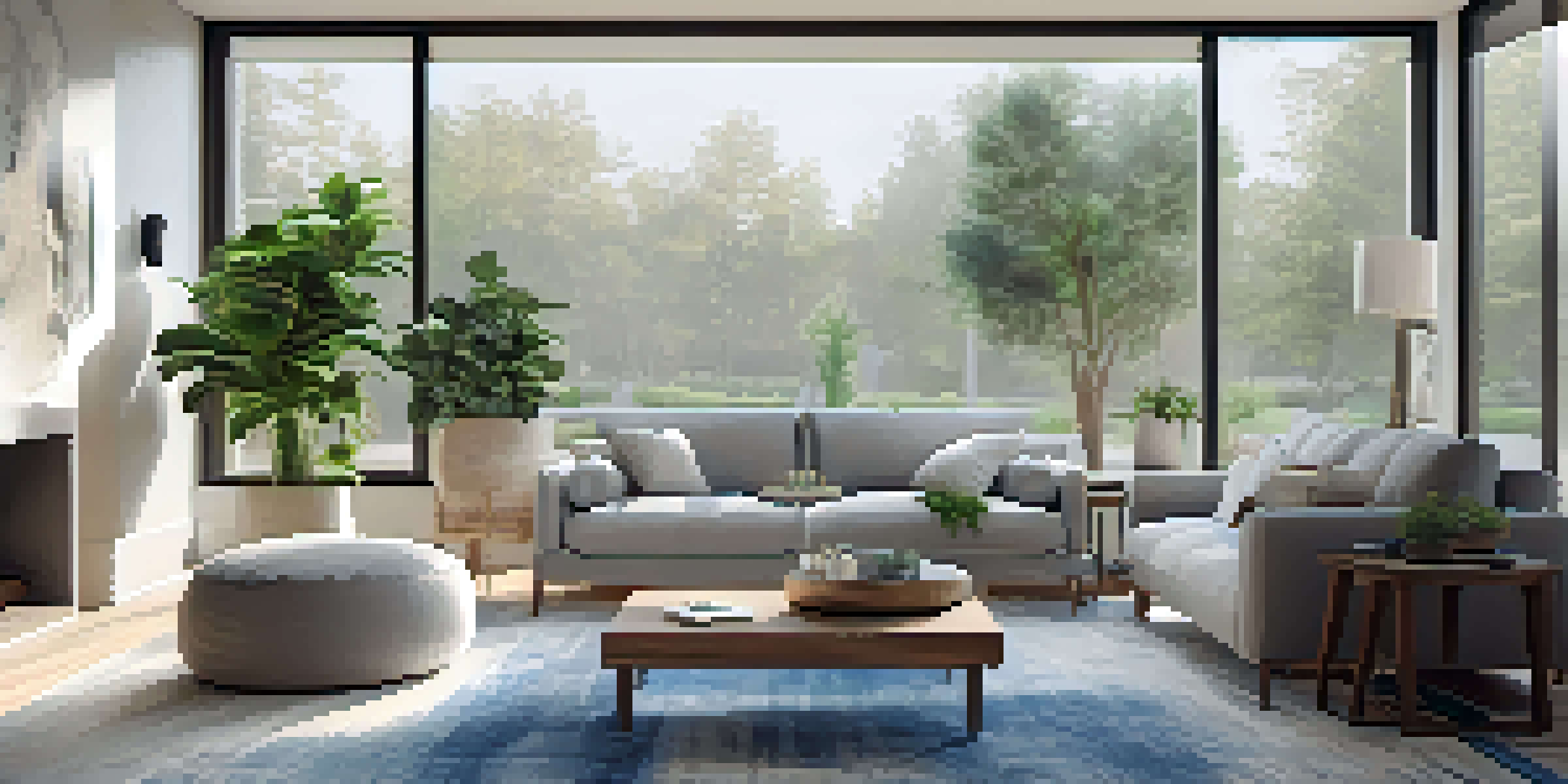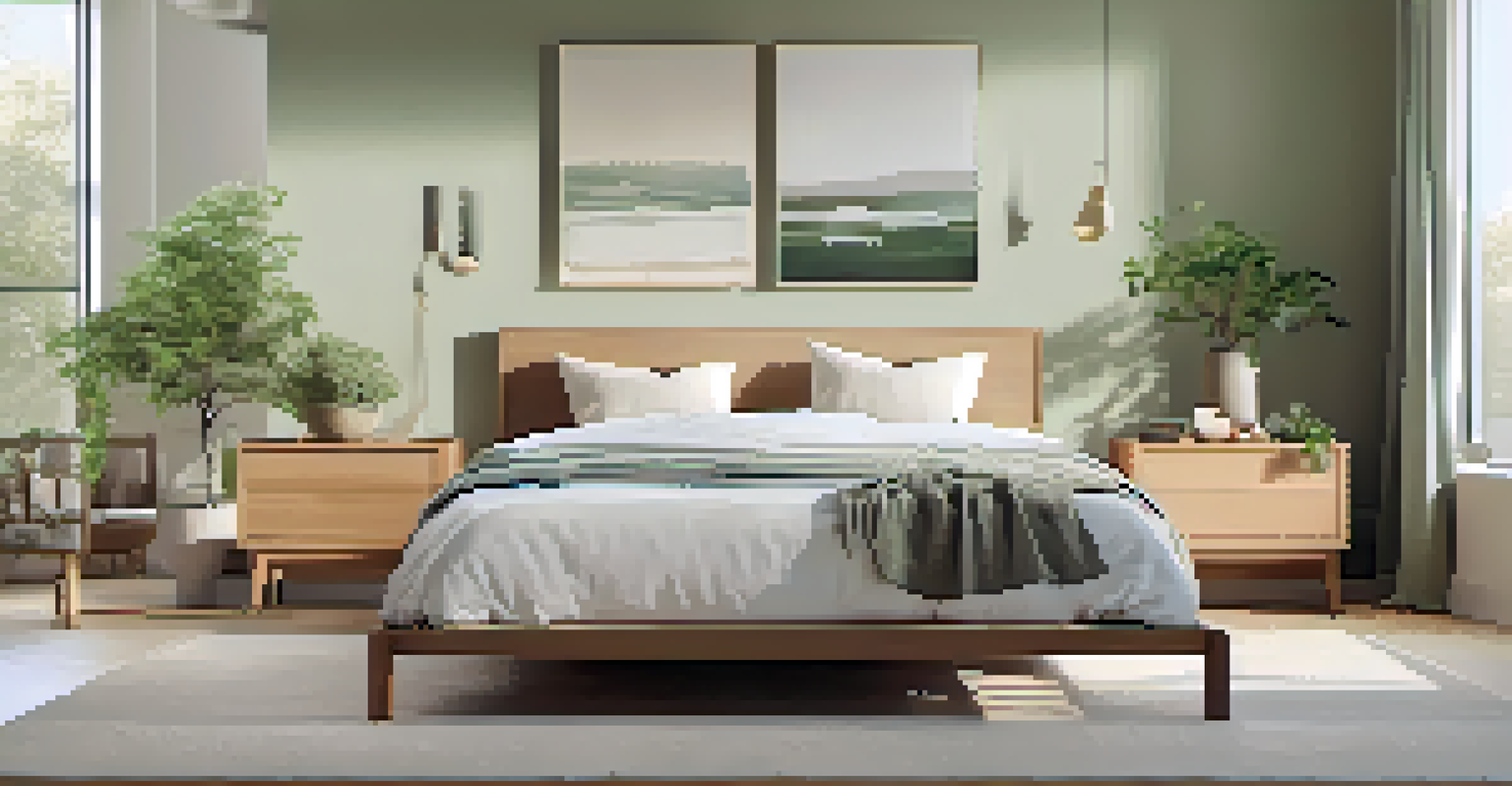Exploring Modern Minimalism in LA Home Design Trends Today

Understanding Minimalism: A Design Philosophy
Minimalism is more than just a design style; it's a way of life. At its core, it focuses on simplicity, functionality, and the elimination of excess. This philosophy encourages homeowners to prioritize quality over quantity, creating spaces that reflect their values and lifestyles.
The ability to simplify means to eliminate the unnecessary so that the necessary may speak.
In the context of home design, minimalism often embodies clean lines, neutral color palettes, and an overall sense of calm. Think of it as decluttering not just your space but also your mind. When every item has a purpose and a place, the home becomes a sanctuary rather than a source of stress.
In Los Angeles, this shift towards minimalism has led to a wave of innovative designs that marry aesthetics with practicality. As more people seek refuge from the chaos of urban life, modern minimalism offers a refreshing escape in their homes.
Key Elements of Modern Minimalist Design
Modern minimalist design is characterized by a few key elements that set it apart from more traditional styles. First and foremost, there's an emphasis on open spaces. It's about letting natural light flow freely, which not only enhances the visual appeal but also elevates the mood of a home.

Another vital aspect is the use of a limited color palette. Soft whites, grays, and earthy tones are prevalent, creating a soothing environment. This restrained color scheme allows homeowners to add pops of color through accessories or artwork without overwhelming the space.
Minimalism as a Lifestyle Choice
Minimalism emphasizes simplicity and functionality, transforming homes into serene sanctuaries.
Finally, functionality plays a crucial role. Every piece of furniture and decor serves a purpose, and this intentionality helps maintain the clean, uncluttered aesthetic that modern minimalism is known for.
The Role of Natural Materials in Modern Homes
Natural materials are a cornerstone of modern minimalist design, bringing warmth and texture to otherwise stark spaces. Wood, stone, and metal are commonly used to create a balanced look that feels both contemporary and inviting. This connection to nature helps ground the design amidst the urban environment of LA.
Simplicity is the ultimate sophistication.
For instance, reclaimed wood can be used for flooring or accent walls, adding character while staying true to minimalist principles. Similarly, polished concrete surfaces offer a sleek, modern touch that is both durable and stylish.
These materials not only enhance aesthetics but also contribute to sustainability. By choosing eco-friendly options, homeowners can reduce their environmental impact while still enjoying a beautifully designed space.
The Impact of Technology on Minimalist Design
Technology has significantly influenced modern minimalist design, enabling smarter solutions for space management. Smart home devices, for example, allow homeowners to control lighting, temperature, and security systems with ease, promoting a more efficient lifestyle.
Moreover, integrated technology can blend seamlessly with minimalist aesthetics. Hidden speakers, built-in charging stations, and smart thermostats can be incorporated without disrupting the clean lines and simplicity that define the style.
Natural Materials Enhance Design
Incorporating natural materials like wood and stone adds warmth and sustainability to modern minimalist spaces.
This technological integration not only enhances convenience but also reinforces the minimalist mantra of 'less is more,' as it reduces the need for bulky devices and cluttered spaces.
Bringing the Outdoors In: Biophilic Design
One of the most enchanting trends in modern minimalist homes is biophilic design, which focuses on creating a connection to nature. This approach encourages the incorporation of plants, natural light, and outdoor views into the home, fostering a sense of tranquility.
In LA, where sunshine and greenery abound, this trend resonates deeply with residents. Large windows and sliding glass doors blur the lines between indoor and outdoor spaces, allowing nature to become an integral part of daily life.
By embracing biophilic elements, homeowners not only enhance their living environment but also improve their overall well-being. Studies show that spending time around plants and natural light can reduce stress and boost mood, making it a perfect fit for the minimalist lifestyle.
Color Psychology: Choosing the Right Palette
Color plays a pivotal role in modern minimalist design, influencing mood and perception. In minimalist spaces, the choice of color can significantly impact the atmosphere, with softer tones promoting relaxation and clarity.
For example, shades of blue and green are often associated with tranquility and calmness, making them ideal for bedrooms and living areas. Meanwhile, warmer tones like beige or soft taupe can add a welcoming touch without overwhelming the space.
Biophilic Design Fosters Well-being
Embracing biophilic elements connects homes to nature, promoting tranquility and enhancing overall well-being.
Understanding color psychology allows homeowners to create environments that align with their desired emotional responses, which is especially important in the fast-paced lifestyle of Los Angeles.
Sustainable Minimalism: A Growing Trend
As awareness of environmental issues grows, sustainable minimalism is becoming increasingly popular in LA home design. This trend focuses on reducing waste and making conscious choices about materials and products used in the home.
Homeowners are now seeking out eco-friendly furniture, energy-efficient appliances, and sustainable building materials that align with minimalist principles. This approach not only benefits the planet but also encourages a more intentional lifestyle.

By embracing sustainable minimalism, individuals can create beautiful, functional spaces that reflect their values while contributing to a healthier environment for future generations.